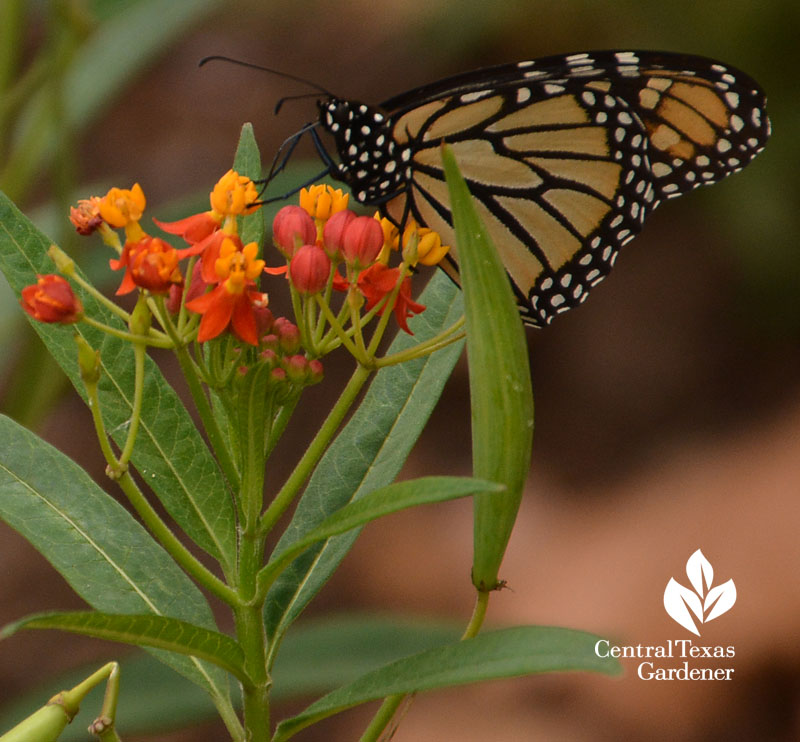November 10, 2016
Keep critters outdoors & politics of sunlight
On our recent hops around Central Texas to tell our neighbors’ stories, we’ve run into lots of wildlife.


We even met a couple of sweet bamboo-eating goats (and the family chickens) for next spring’s segment highlighting the Funky Chicken Coop tour. By the way, the neighbors borrow the goats to keep their bamboo in check.

“Psycho lighting” followed us around, too. In this wildlife habitat, we hustled like crazy, since the light changed every 5 minutes!

You bet, it’s a quandary for gardeners when sun and shade hit an area at different times of the day. Mahonia ‘Soft Caress’ fits the bill to fasten a bed together.

This week, Daphne highlights this diminutive evergreen shrub. Growing to about only about 3’ tall, Mahonia ‘Soft Caress’ is hardy to USDA Zone 7. Plant it in morning sun or in filtered light under a tree’s canopy.

At the Travis County Extension teaching garden, its wispy leaves neatly contrast shrimp plant, dianella, and ‘Baby Gem’ boxwood. Find out more.

But, many plants are curmudgeons about light, including artichokes, which want full sun. At the Travis Extension teaching garden, they planted artichokes in two spots, one at the edge of an island bed and one near the building.

It appeared that the one in front gets lots of sun, but in fact, it’s only until about noon and a little in late afternoon. In home gardens, it’s easy to be deceived, too, if we’re not around all day to observe seasonal nuances.

Anyway, that one is silvery and compact but not as robust as it could be.
Although the building artichoke gets sun, that spot turns to shade very quickly. That one is taller and darker.

Daphne explains: Sun-lovers grown in too much shade grow taller, because they’re stretching to find the light. Plants in shade also need more chlorophyll to perform photosynthesis. Find out more.
When it comes to gloves, one size doesn’t fit all when it comes to chores. I’ll plant seeds bare-handed, but our alkaline soil, hidden dog poop, and a few run-ins with sharp Felcos convinced me to cover up.
So, I’ve got gloves for digging that can handle getting wet, others for “serious” pruning, ones for rock hauling, and long rose gloves when working around sharp plants and those that make me itch.
See how John gets a grip on the right gloves to tote!

As cold weather scoots in, so do the wild things to cozy up with you! Michael Shelley from A Wildlife Pro explains how to critter-proof your house against mice, squirrels, raccoons and other crafty creatures.

Last fall and winter, Greg and I had unwelcome guests (mice or roof rats). We thought we had everything sealed up, but Michael revealed their secret trick.
When we chose to live trap them, Michael detailed placement and bait food: peanut butter rocks! Since then, the only critters indoors are house bunnies, Harvey and Bun.

We’ve also adopted formerly feral Sally, who got our address from all the rodent action, and decided to stick around as a “vet-certified” pet. She likes sleeping inside but hangs out in our native Texas bluegrass (Poa arachnifera).

Watch now for Michael’s great tips!
On tour, Landscape Architect Tait Moring welcomes wildlife in his habitat garden: as long as they stay outside, where he grounds style with conservation and preservation. Watch now!
Thanks for stopping by! Join us next week to see how to keep those lovely orchids alive. Linda

